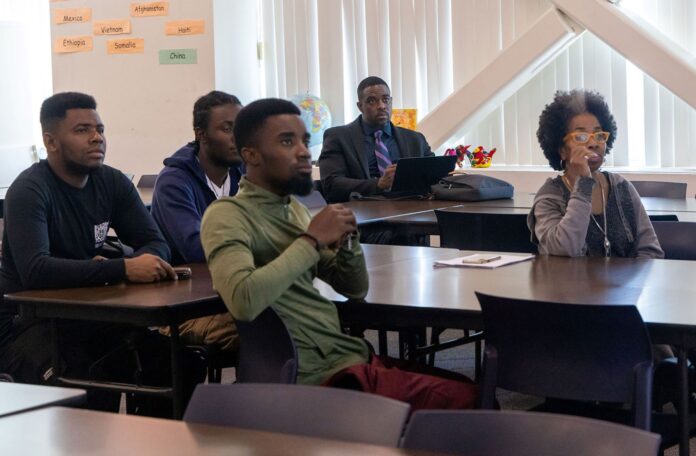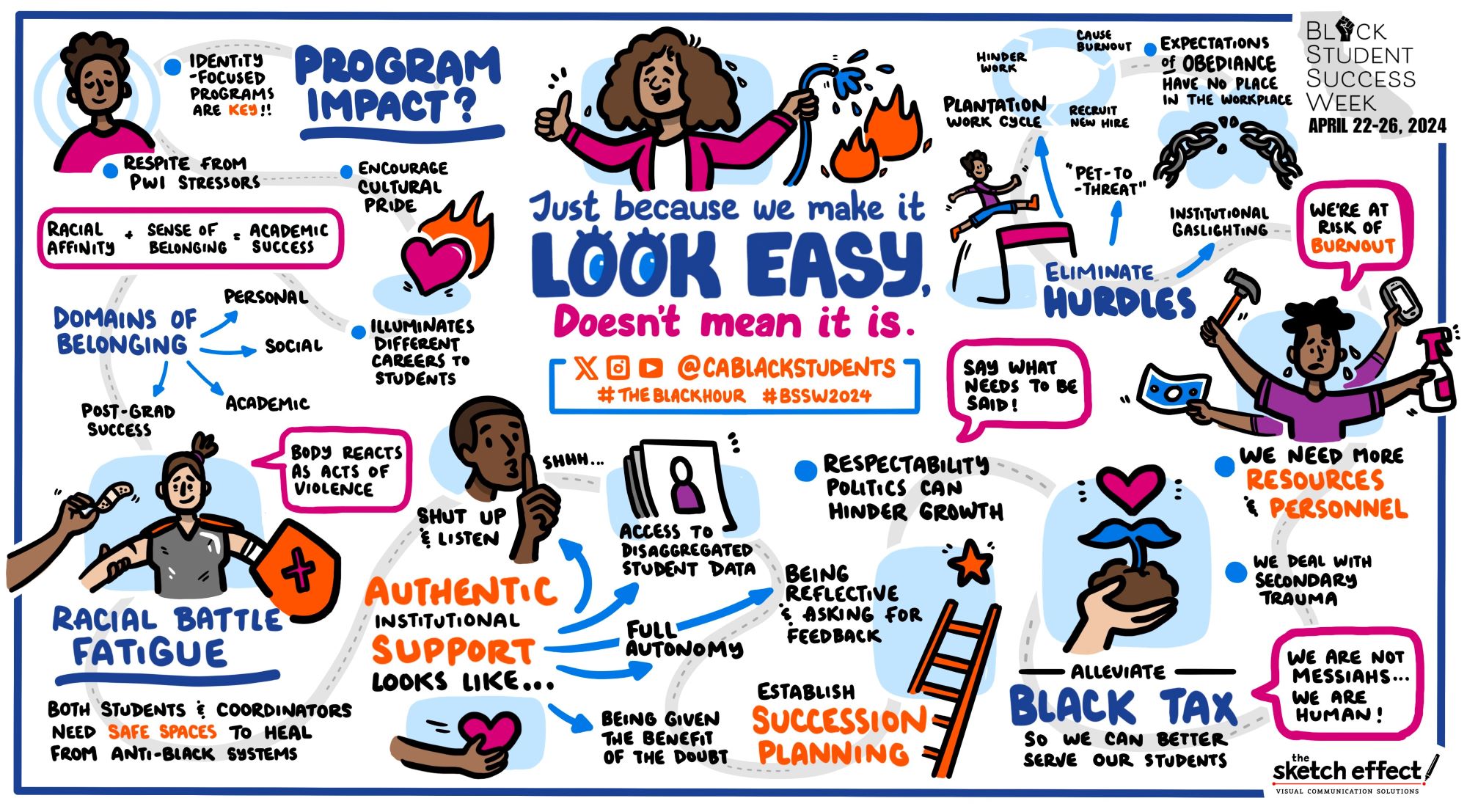
By Macy Meinhardt, Voice & Viewpoint Staff Writer
Last week students, practitioners, and community partners associated with San Diego Community College District joined together for Black Student Success week, an annual event that celebrates the institutional commitment towards Black successes in higher education .
The theme of this year’s Black Student Success Week is Building a Better Future Together: The Urgency is Now.
#TheBlackHour
The five day event featured a series of webinar workshops throughout the week. Labeled #TheBlackHour, the topics covered degree accessibility, AI and racial equity, affirmative action, workforce development, policies, and being on the front lines of Black student success.
This is the fourth year the week April 22-26 has been recognized by the community college district. Originally, the Black Student Success Week Coalition was established in 2020 in response to an urgent need for state leaders to take action in supporting Black students.
During the “Empowering Black Excellence” workshop, President of San Diego Community College of Continuing Education (SDCCE) Dr. Tina M. King, spoke on the disparities facing Black students and how institutions such as SDCCU is working “to close the gap.”
Black Learner Demographics in California’s Community Colleges
- Median household income: $24,000 vs. $39,000 for White community college students
- Experiencing Poverty: 36%
- Parenting: 40% Mothers, 21% Fathers
- Employed: 78%
- 25 and older: 52%
“As you can see, these incomes are essentially at poverty level and many below poverty level,” said Dr. King.

Based on a UNCF report, barriers to graduating from college for some African American students is evidenced by nationally low retention rates of Black students. Among students enrolled in four-year public institutions, 45.9% of Black students complete their degrees in six years—the lowest rate compared to other races and ethnicities. Black men have the lowest completion rate at 40%.
Therefore, in commitment to ensuring that Black students have the proper tools needed to beat the statistical odds, the coalition is made up of campus and national and system leaders, faculty, and students.
“For many of us who are serving adult learners, we know that Black learners are amongst the most culturally ethnically socioeconomically and educationally diverse in the state. So shout out to the practitioners who are in the trenches developing the programs and increasing black student success.” said Dr. King.
In total there were five panels paired with watch parties at multiple SDCD campuses and follow up debriefs called #TheAfterparty.
In one of the panels, “Just Because we make it look easy doesn’t mean it is” moderators led a candid discussion on the challenges of yielding authentic change and equity within an institution. Questions posed such as “what does authentic institutional support look like to you?” prompted the group of faculty members to reflect and share successes and struggles within their pursuit of educational equity for students.
“When institutions want to authentically support communities, they must do three things. The first thing they have to do is go to the affected community and ask them what they need. The second thing they have to do is shut up and listen. Then, they need to believe them, and act based on what the community says,” said Dr. Jonathan Henderson.

Furthermore, Friday’s discussion centered on the increased implications AI may have on Black students, as well as a centralized focus on encouraging Black minds to have a seat at the table through the integration of AI into education.
“You are entitled to using this technology; we 100% deserve to leverage the opportunity and insights of AI,” said Dr. Jonathan Locust.
Based upon data collection, speakers also emphasized the importance of having a diverse pool of sources and minds used to develop future artificial intelligence technology.
“Representation is needed and vital in the shaping of this technology,” said Mohamed Sharif-Idiris.
Another panel discussed innovative practices that target Black student success within the intersection of policy, workforce development and apprenticeship programs. Kicking this discussion off was the Inaugural Chief Diversity and Equity Officer of the U.S. Department of Labor, Alaysia Black Hackett. Chief Hackett spoke on behalf of the Biden and Harris administration’s role in supporting the college to workforce pipeline, including the distribution of $135 million in grants to support this initiative.
Federal funding like this helps the success of training certificate programs as well as apprenticeship programs offered by San Diego community colleges as an accessible on ramp to the workforce. For example, SDCCE offers 70 career training certificate programs in high demand sectors, specifically developed for low income veterans, first generation immigrants, refugees and asylum seekers students.
Apprenticeship programs on the other hand, are work based learning programs that give students on the job training and help with direct job placement. Since the start in 2021, to this day the program has served 11 cohorts, enrolling over 194 students.
“What we’re most proud about and excited to share for me, is that a quarter of our students, 25% of participants, are black students. So 25% far exceeds the black representation in San Diego which is only 6% of the San Diego city population,” said Dr. King.
Wrapping the fourth year of honoring Black students, the week was filled with a myriad of insight, bonding, tool building, and innovation along the imperative mission of cultivating Black excellence in higher education.
Macy Meinhardt is a part of the inaugural cohort of UC Berkeley Local News Fellowship serving as the local reporter for San Diego Voice & Viewpoint.



